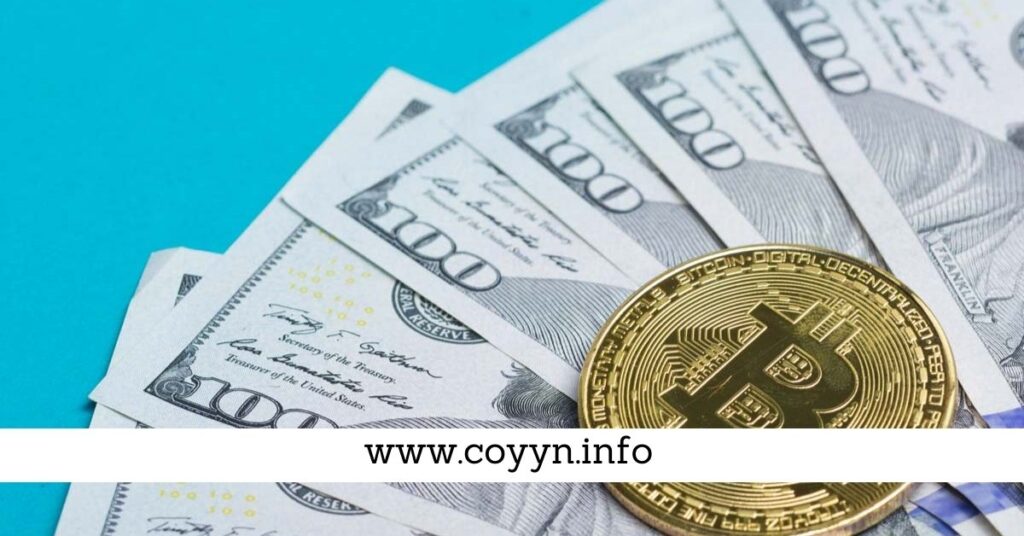Selling Bitcoin can seem tricky at first, but it’s simpler than you might think. Whether you’re cashing out for profit, paying bills, or funding a new venture, there are plenty of ways to convert your Bitcoin into real money. From online exchanges to peer-to-peer platforms, the options are secure and flexible.
Ready to learn how to sell Bitcoin like a pro? Stick around as we explore the easiest methods, key tips, and tools to maximize your sale!
Method 1: Bitcoin Wallet Apps
Bitcoin wallet apps offer a fast and straightforward way to sell Bitcoin directly from your phone or computer.
Pros:
- User-friendly interface for beginners.
- Quick access to funds after selling.
- Supports various cryptocurrencies alongside Bitcoin.
Cons:
- Transaction fees may be higher than other methods.
- Limited control over exchange rates.
Steps to Sell:
- Open your Bitcoin wallet app and log in.
- Select the “Sell Bitcoin” option.
- Enter the amount you want to sell and your payment method.
- Confirm the transaction and receive your funds in your linked account.
Method 2: Bitcoin Exchange Services
Bitcoin exchanges are platforms where you can trade Bitcoin for fiat currency or other digital assets.
Pros:
- Competitive exchange rates.
- Advanced features like limit orders and price tracking.
- High liquidity for large transactions.
Cons:
- Account setup can be time-consuming.
- Withdrawals may take a few days.
Steps to Sell:
- Create an account on a trusted Bitcoin exchange like Coinbase or Binance.
- Deposit your Bitcoin into the exchange wallet.
- Place a sell order based on your desired price or use market price.
- Withdraw your funds to a bank account or digital wallet.
Method 3: Centralized Exchanges (CEXs)
Centralized exchanges (CEXs) are trusted platforms for buying and selling Bitcoin, offering robust features for seamless transactions.
Pros:
- High security with regulated operations.
- Access to multiple cryptocurrencies and trading tools.
- Fast transactions with competitive rates.
Cons:
- Requires identity verification (KYC).
- Funds are stored on the platform, posing slight security risks.
Steps to Sell:
- Sign up on a reliable centralized exchange like Binance or Kraken.
- Transfer your Bitcoin to the exchange wallet.
- Choose a market or limit sell order, depending on your preferences.
- Complete the sale and withdraw funds to your linked bank account or e-wallet.
Method 4: Bitcoin ATMs
Bitcoin ATMs allow you to sell Bitcoin for cash instantly, making it a convenient option for on-the-go transactions.
Pros:
- Immediate cash payout.
- No lengthy account setup required.
Cons:
- High transaction fees compared to online methods.
- Limited availability in certain areas.
Steps to Sell:
- Locate a Bitcoin ATM near you using online tools like CoinATMRadar.
- Select the “Sell Bitcoin” option on the machine.
- Scan your Bitcoin wallet QR code and send the specified amount.
- Receive cash after the transaction is confirmed.
Method 5: Peer-to-Peer (P2P) Trading
Peer-to-peer (P2P) trading lets you sell Bitcoin directly to buyers without a middleman, offering flexibility and control.
Pros:
- No intermediary fees, reducing costs.
- Freedom to set your preferred price and payment method.
- Works in areas with limited access to exchanges.
Cons:
- Requires trust between buyers and sellers.
- Risk of scams or delayed payments.
Steps to Sell:
- Register on a trusted P2P platform like Paxful or LocalBitcoins.
- Create a sell ad, specifying your price and payment terms.
- Confirm the buyer’s payment and release Bitcoin from escrow.
Read: Crypto FintechZoom: Exploring the Latest Insights of Digital Currency
Method 6: Using a Brokerage
Brokerages simplify selling Bitcoin by handling transactions for you, making it beginner-friendly.
Pros:
- Hassle-free process for non-technical users.
- Fixed rates with no need to manage trades.
Cons:
- Higher fees compared to exchanges.
- May require identity verification.
Steps to Sell:
- Sign up with a brokerage like eToro or Robinhood.
- Deposit your Bitcoin and select the “Sell” option.
- Withdraw your funds once the sale is processed.
Why do I need to verify my identity to sell bitcoin?
Identity verification is a standard process when selling Bitcoin on most platforms. It ensures compliance with Know Your Customer (KYC) and Anti-Money Laundering (AML) regulations.

By verifying your identity, platforms confirm that you’re a legitimate user, which protects against fraud and illegal activities. This process also helps secure your account and funds, ensuring that only you can access your transactions.
For verification, you may need to provide personal details like your name, address, and a government-issued ID. While it may seem inconvenient, this step is essential for maintaining a safe and regulated Bitcoin marketplace.
What Are the Fees for Selling Bitcoin?
Selling Bitcoin incurs different fees depending on the method you choose. On centralized exchanges, fees typically range between 0.1% to 0.5% per transaction.
Bitcoin wallet apps and brokerages may charge higher fees, often up to 2%. If you’re using Bitcoin ATMs, expect fees to be significantly higher, ranging from 5% to 10%.
Some platforms also include withdrawal fees when transferring funds to your bank or wallet. Always review fee structures beforehand to maximize your profit when selling Bitcoin.
P2P platforms
Peer-to-peer (P2P) platforms allow users to buy and sell Bitcoin directly without intermediaries. Platforms like Paxful, LocalBitcoins, and Binance P2P provide a secure marketplace where sellers can connect with buyers.
Advantages: These platforms let you set your price and payment terms, offering flexibility and control over the sale process. They often support various payment methods, including bank transfers, PayPal, or cash deposits. Additionally, P2P platforms use escrow services to ensure safe transactions by holding the Bitcoin until payment is confirmed.
Challenges: While convenient, P2P trading carries risks, such as potential scams or delays in payment. Always choose platforms with strong user reviews and security measures to avoid problems.
Over-the-Counter Trading
Over-the-counter (OTC) trading is ideal for large-scale Bitcoin transactions. Instead of using public exchanges, you deal directly with buyers or brokers who facilitate the trade.
Advantages: OTC trading offers privacy and helps avoid market slippage, which occurs when large trades impact Bitcoin’s price on public exchanges. Transactions are often faster and handled with personalized support.
Challenges: This method is primarily suited for institutional investors or individuals dealing with high volumes of Bitcoin. Fees can be higher, and finding a reliable OTC desk is crucial for security. Examples include Kraken OTC and Genesis Trading.
Converting Bitcoin to Stablecoins
Another way to manage your Bitcoin is by converting it into stablecoins, such as USDT, USDC, or DAI. Stablecoins are cryptocurrencies pegged to stable assets like the US dollar, reducing volatility risks.
Advantages: By converting Bitcoin to stablecoins, you can preserve your asset’s value during market downturns. Stablecoins are also easy to transfer and can be exchanged for fiat currency whenever needed.

Challenges: While stablecoins reduce price swings, they rely on trust in the issuing entity’s reserves. Fees for conversion are typically low but can vary depending on the platform.
How to Convert: Use centralized exchanges like Binance, Coinbase, or Kraken to swap your Bitcoin for stablecoins instantly. This method is especially beneficial for traders wanting to hedge without cashing out completely.
Wishing you smart, safe trading
Trading Bitcoin can be exciting and profitable, but it’s crucial to trade wisely. Use secure platforms like trusted exchanges or P2P services with strong security measures. Always double-check transaction details and stay alert to avoid phishing scams or fraudulent schemes.
Understand the fees, risks, and market conditions before selling. Diversify your approach by exploring options like converting Bitcoin to stablecoins for stability or using OTC trading services for high-volume transactions. Knowledge and preparation are your best tools for success.
Smart trading means staying informed and prioritizing safety. Plan your steps, manage risks, and make decisions that protect your investments. Wishing you smooth, secure, and profitable Bitcoin transactions every time!
CONCLUSION:
Selling Bitcoin doesn’t have to be complicated. From using P2P platforms to centralized exchanges or converting to stablecoins, there’s a method for everyone. Each approach comes with its own pros and cons, so choose one that aligns with your goals and comfort level.
Always prioritize security by using trusted platforms, verifying buyers, and staying informed about market trends. With smart planning and safe practices, you can maximize your profits while minimizing risks. Here’s to successful and secure Bitcoin trading!








